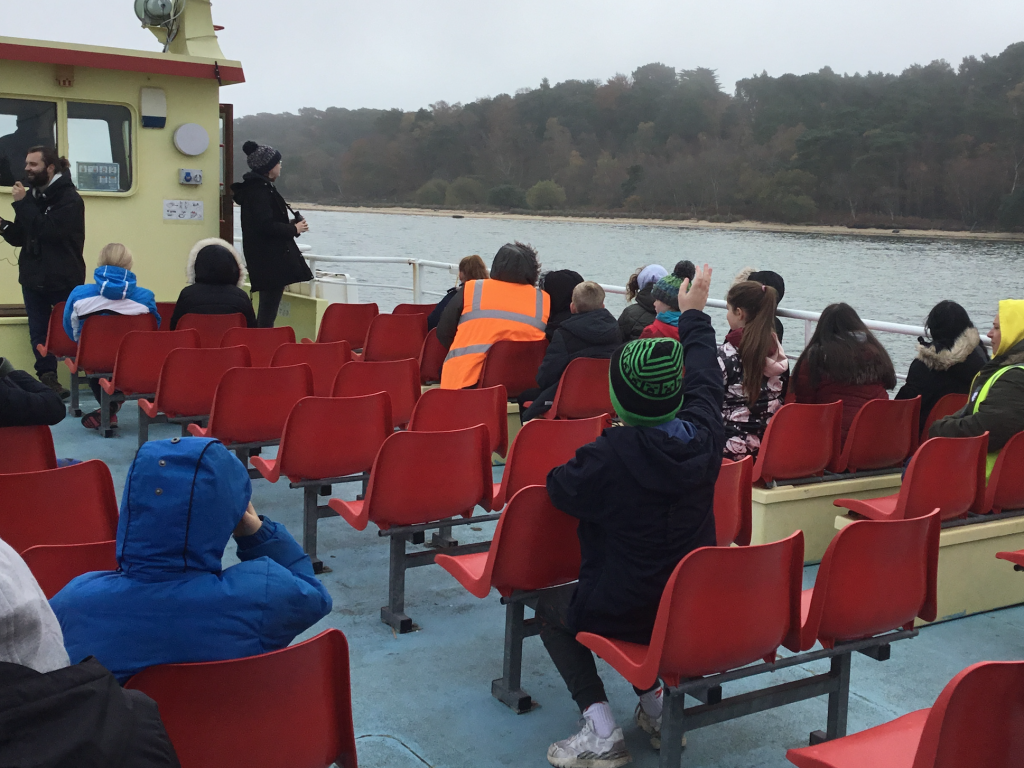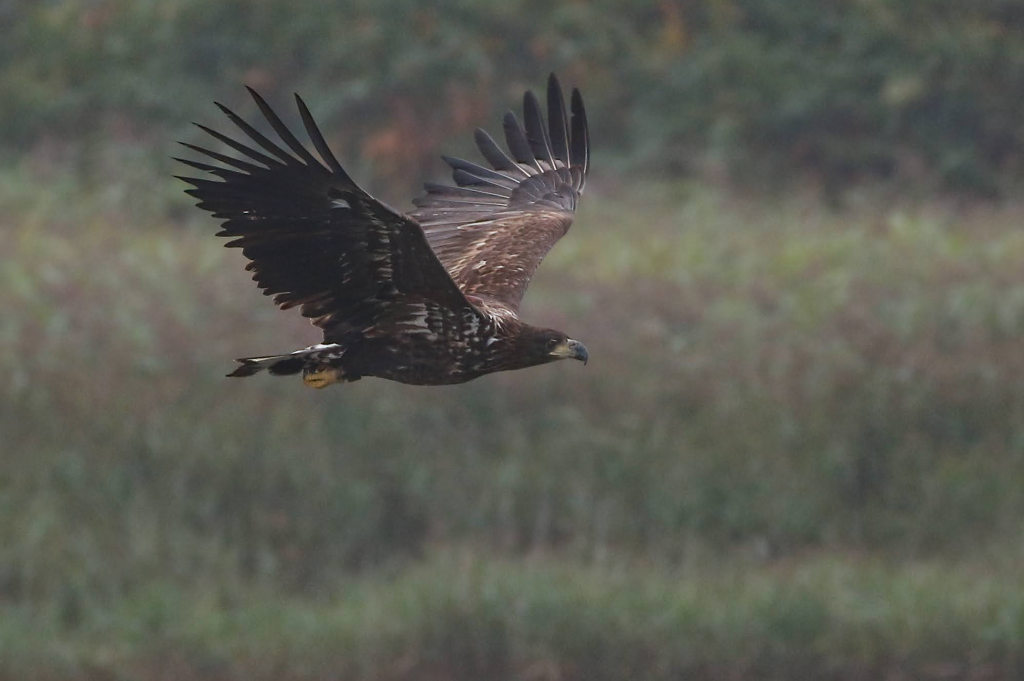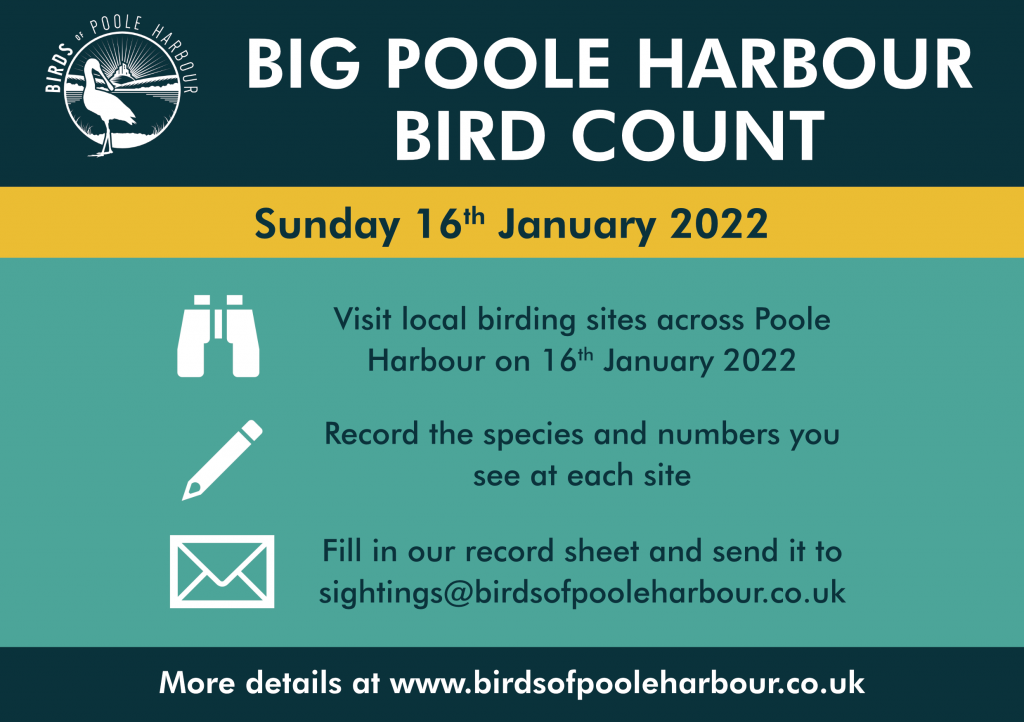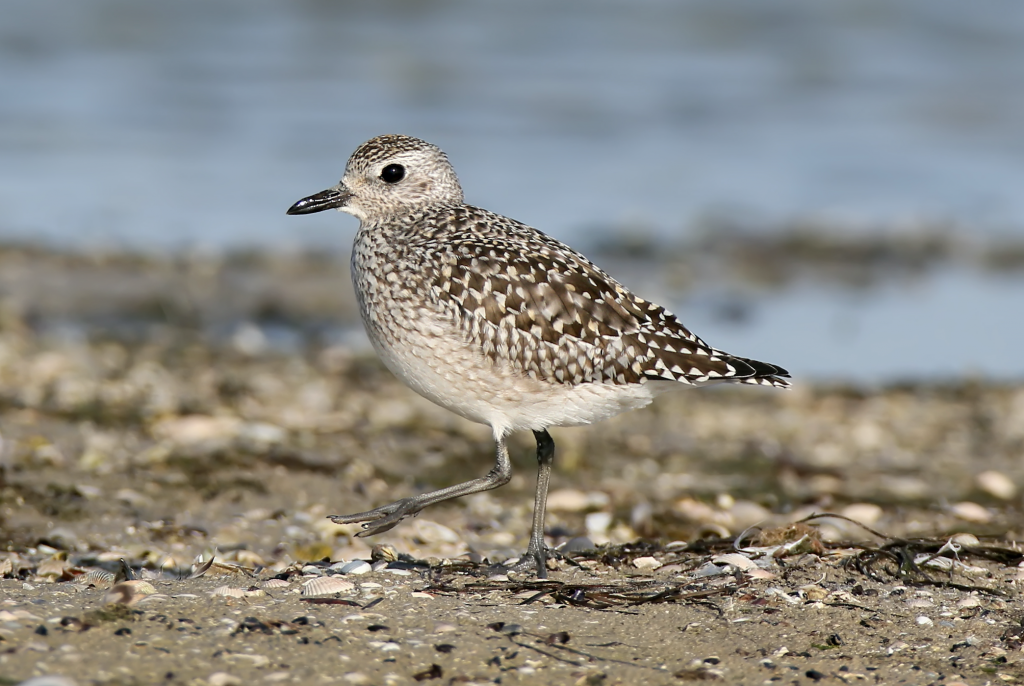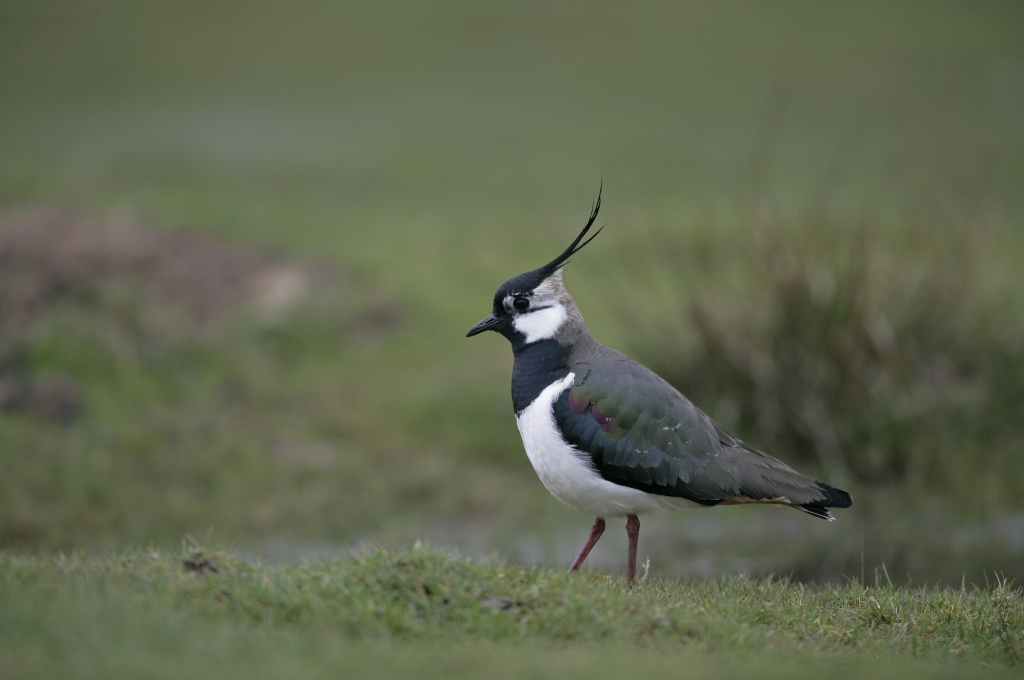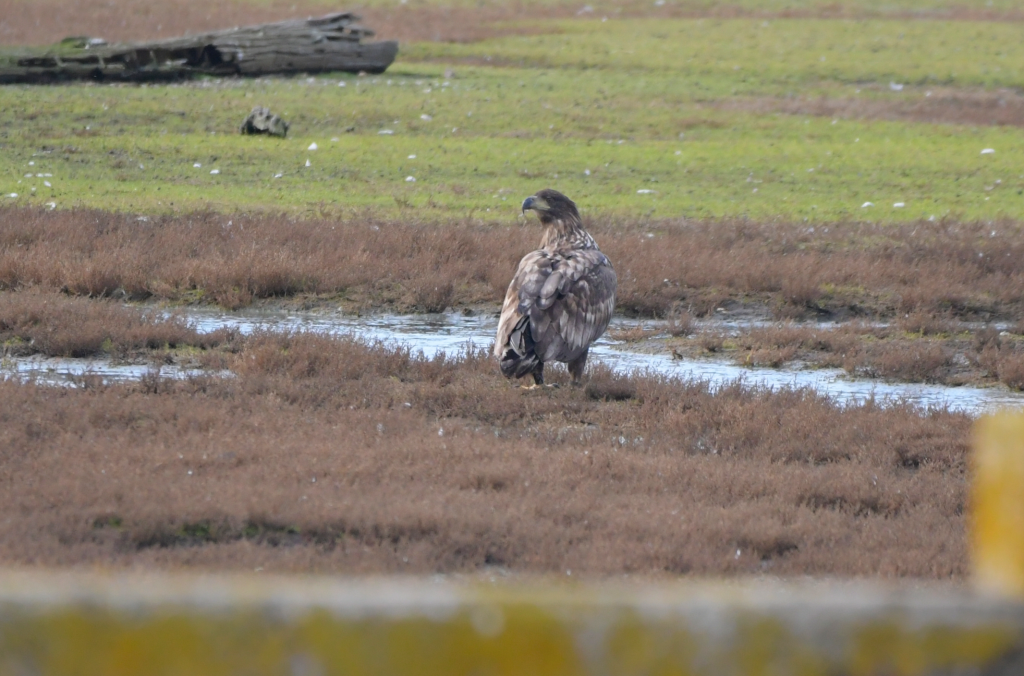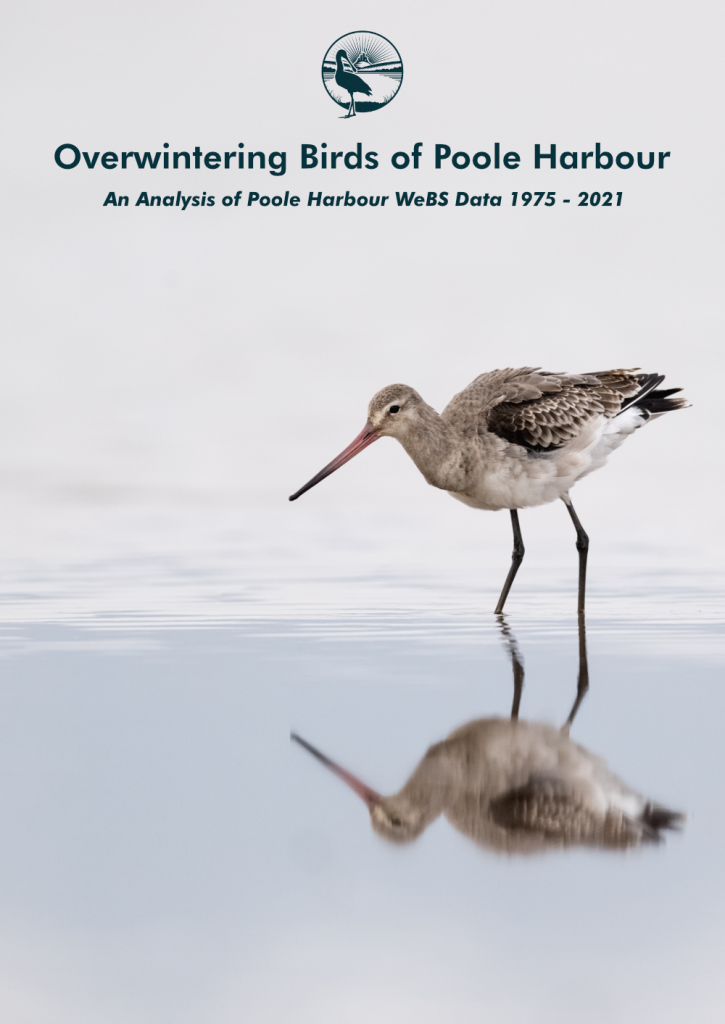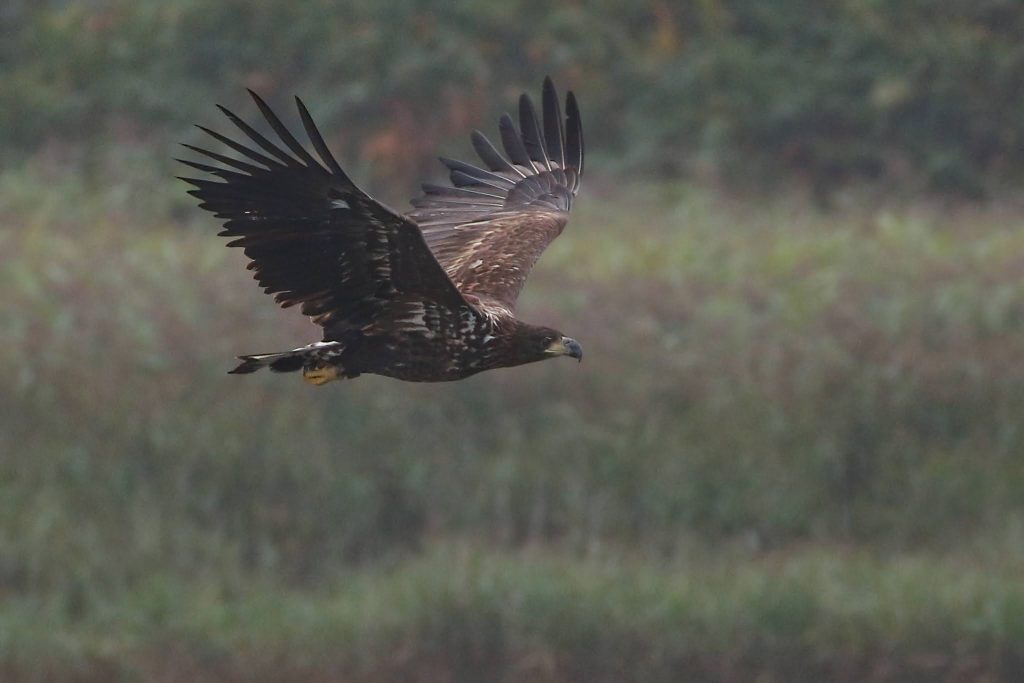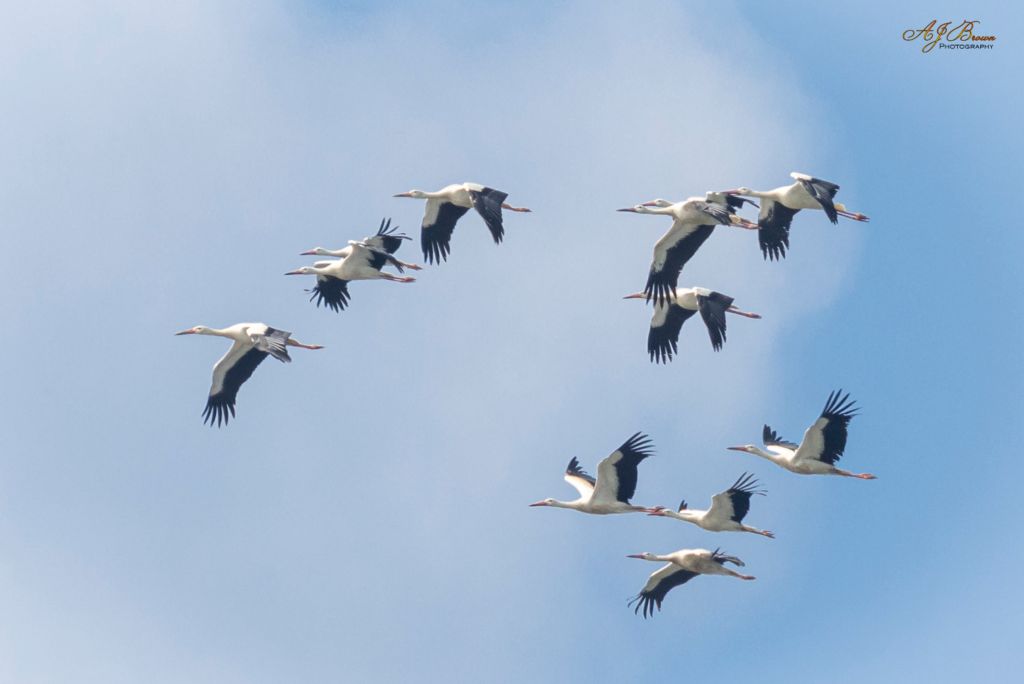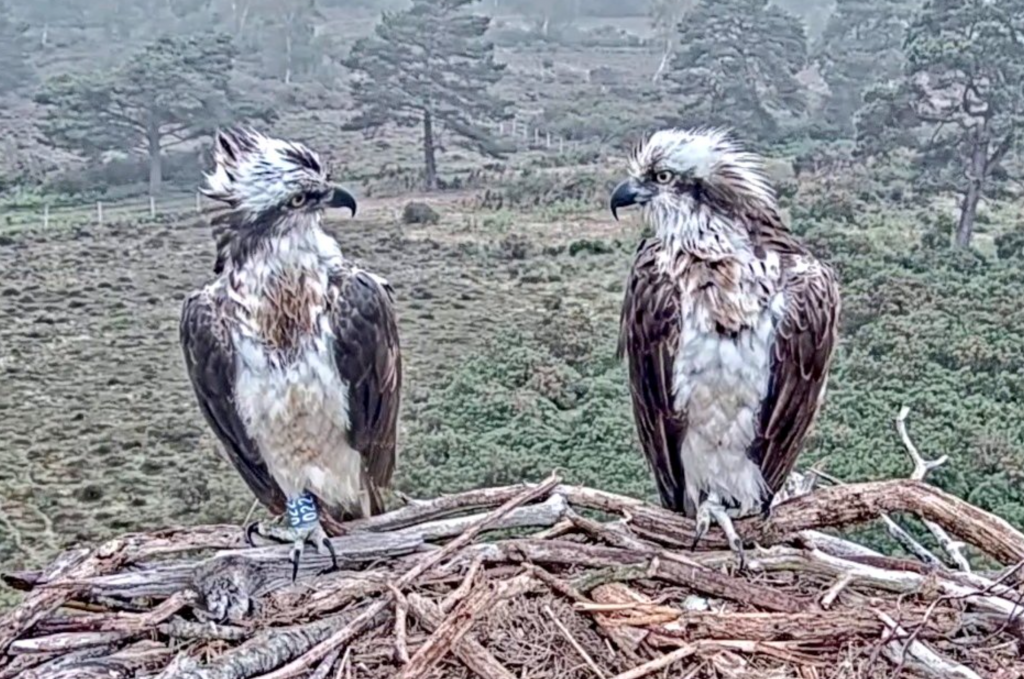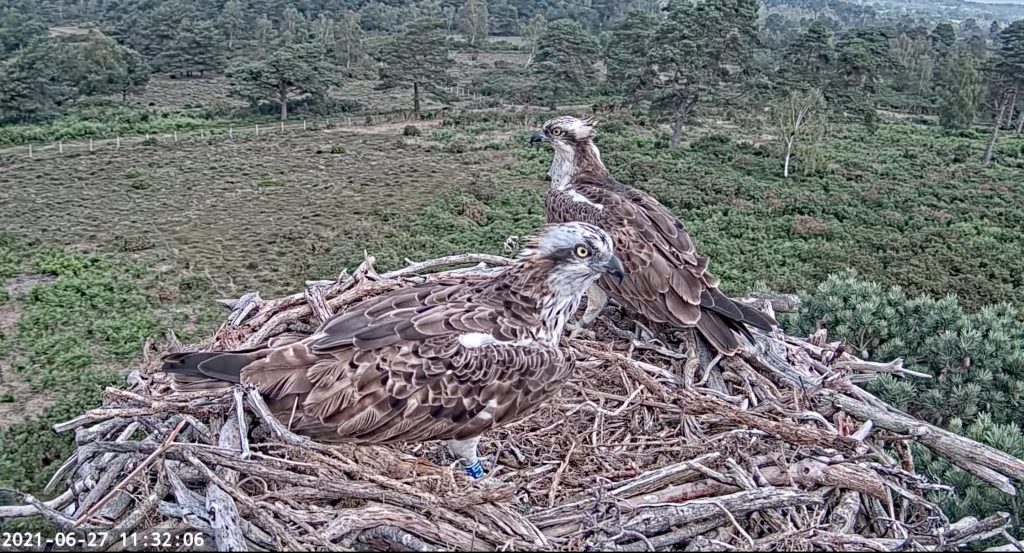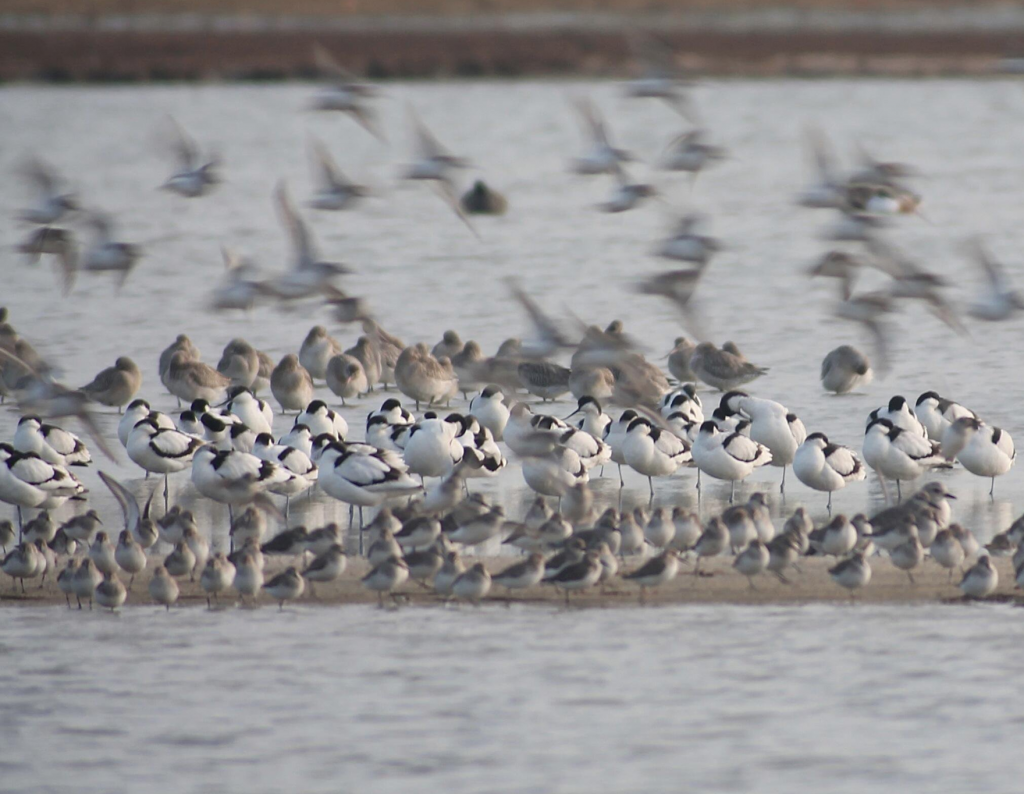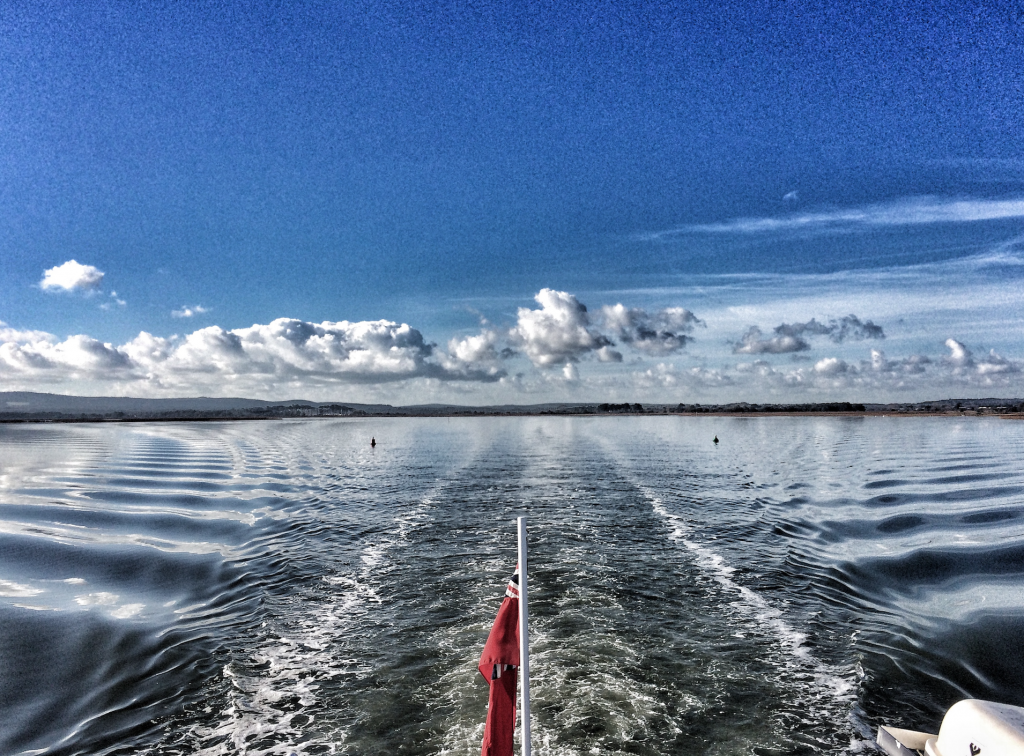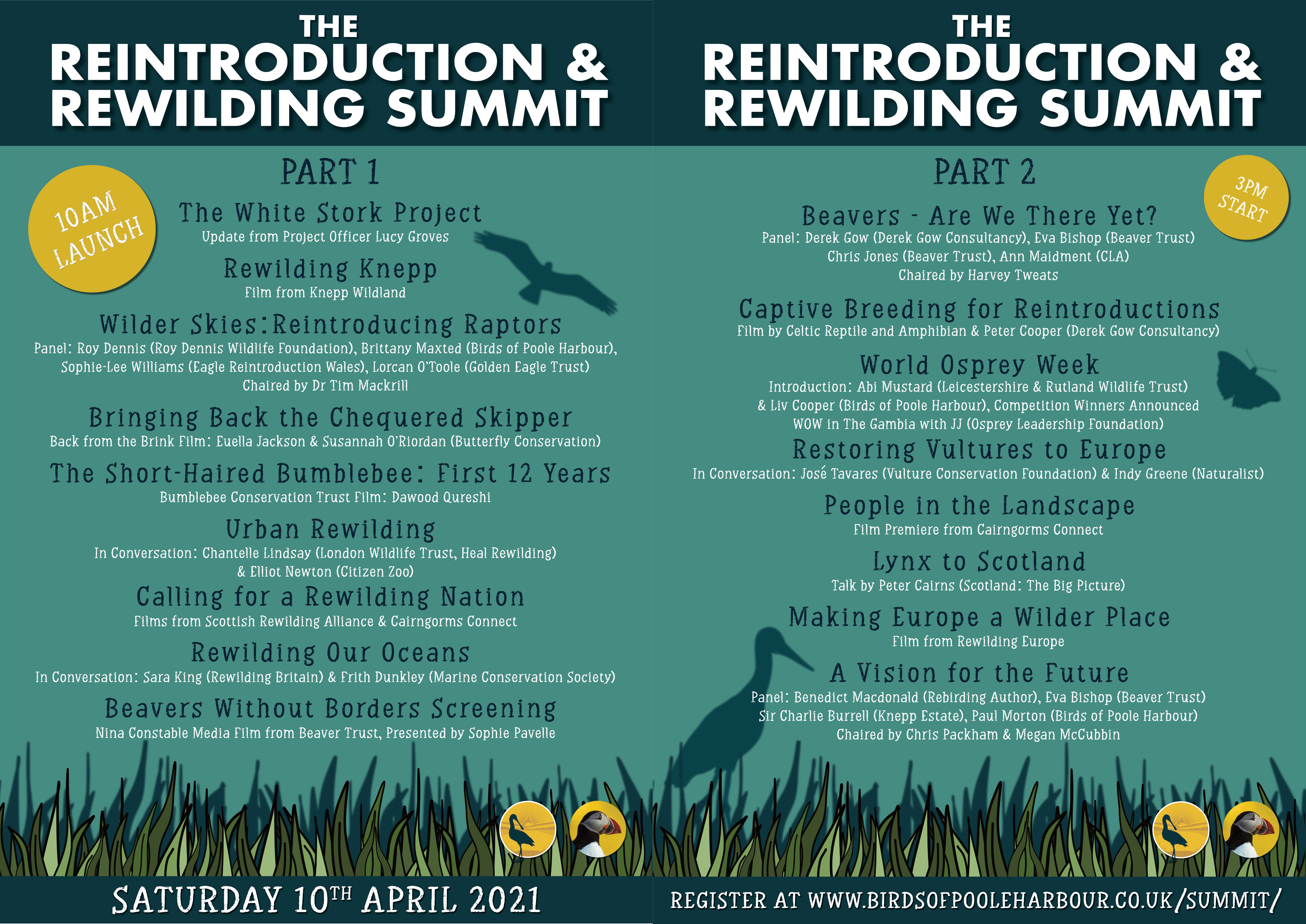The recent arrival of a pair of Ospreys and several White-tailed Eagles into Dorset – specifically Poole Harbour – has seen new, exciting environmental education and eco-tourism opportunities arise which are set to benefit schools and the local economy.
- Pair of Osprey return to Dorset, the first in southern Britain for nearly two centuries.
- White-tailed Eagle arrival wows school children during school trip
- Eco-tourism and education opportunities already increasing in Dorset
- Partnerships see reintroductions work and re-establish lost species
Ospreys, which haven’t bred in Southern Britain for nearly 200 years, are on the brink of returning thanks to a reintroduction program which began in Poole Harbour in 2017. Whilst White-tailed Eagles, which haven’t bred in England for nearly 250 years, began regularly appearing in Poole Harbour in September last year with a young male called G461 who began exploring and making the harbour his home. The eagles, which have an 8ft wingspan, originated from the Isle of Wight reintroduction program that’s being hosted by The Roy Dennis Wildlife Foundation and Forestry England.
The Poole Harbour Osprey reintroduction program, which is being carried out by local charity Birds of Poole Harbour and The Roy Dennis Wildlife Foundation, received a boost this week when a male and female Osprey arrived back safely on their migration from West Africa and settled on a nest platform at a secret location in the area. The pair known as CJ7 and 022 first met last summer, although the male was too young to breed. However, they’ve now both retuned early enough meaning there’s a good chance the pair will attempt to breed this summer, which will be a historic moment for Dorset.
During the latter months of 2021, a male White-tailed Eagle known as G461 spent his days touring the harbour, being seen regularly at sites like RSPB Arne, Brownsea Island and from public bird boat tours. Local school Longfleet Primary also had a special encounter, whilst taking part in the School Bird Boat project, an initiative run by the Birds of Poole Harbour charity. They saw the massive lumbering giant over the Brownsea Lagoon, providing a nature experience never to forget.
Longfleet School Children on School Bird Boat Project
Eco-tourism opportunities predicted to soar
As a result of the reintroductions of both White-tailed Eagles and Ospreys in southern Britain, it’s predicted that both species will establish breeding populations on the south coast over the coming years, which will not only help re-establish the species across their native range, but bring significant economic benefits too.
A recent study called the “The Economic Impact of White-Tailed Eagles on the Isle of Mull”, published by RSPB Scotland, has revealed the scale of the economic benefits that White-tailed Eagles have in that area. Tourism inspired by these majestic birds of prey accounts for between £4.9 million and £8 million of spend every year on Mull with the money supporting between 98 and 160 full time jobs on the island, and between £2.1 million and £3.5 million of local income annually. It’s hoped that the South Coast will benefit in a similar way, with evidence already emerging that the eagles are beginning to have a positive impact in the area.
In recent weeks several other White-tailed Eagles have found their way into Poole Harbour, including two regularly visiting females known as G801 and G318. Their presence has seen excitement build even more with visits to nature reserves and bird boat bookings increasing as a result.
There are also now plans through different initiatives to use the eagle’s and Osprey’s presence as a platform to engage local schools in educating students about the process of nature recovery, reintroductions and restoration. Live webcams have been installed on several of the Osprey nests so schools and members of the public can hopefully watch this historical moment.
White-tailed Eagle – Brownsea Lagoon and Poole Quay – Alison Copland
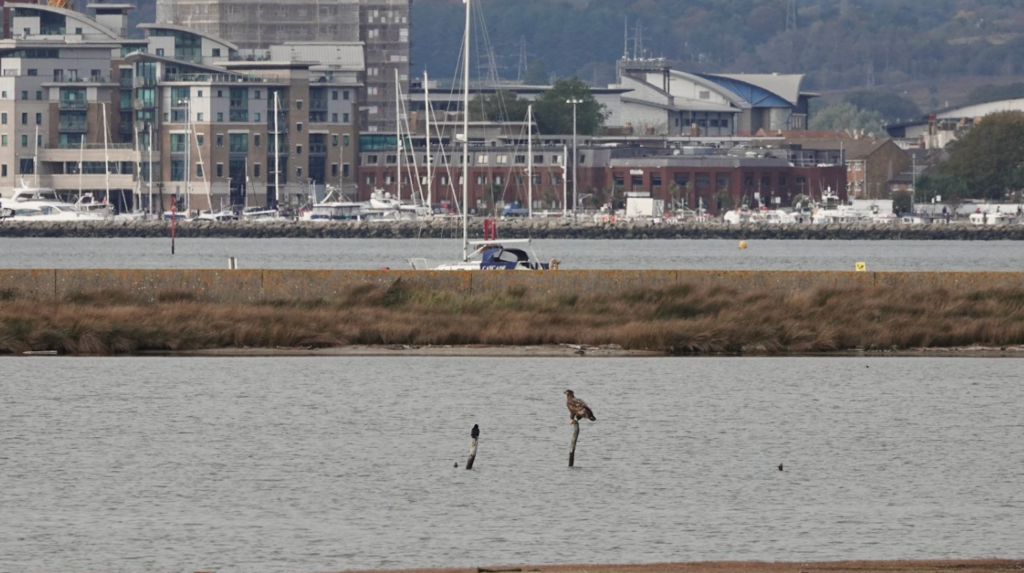
Paul Morton from the Birds of Poole Harbour charity stated;
‘It’s been a fascinating last 6 months. Never in our wildest dreams did we ever think we’d regularly be seeing White-tailed Eagles in Poole Harbour, but here we are, thanks to the hard work and persistence of multiple teams, that dream has become a reality. Also, to now have a pair of Osprey back in the harbour looking to set up territory is a perfect scenario.
One of the highlights of my career was the school bird boat last year when we saw male eagle G461 with Longfleet School. It was a really significant moment as it highlighted how far we’ve come as a society in our understanding, acceptance and knowledge in taking on ‘big’ projects like this. It’s not just eagles either. We’re of course currently carrying out our Osprey reintroduction right here in Poole Harbour, another species that hasn’t bred here for nearly 200 years due to human persecution, and with both ‘CJ7 and 022’ now safely back, we’re on the brink of seeing them back where they should be.
We’ve seen a real increased desire from the public to learn about and experience these reintroduction stories. On our Spring Safari Cruises recently we’ve been seeing the female White-tailed Eagles from the boat and most recently displaying Osprey too. It’s just magical. It was without doubt one of the most incredible moments of my career. To witness and share these moments with like-minded people was truly special, as it symbolised hope, progress and willingness to make things better. It was a hugely positive experience, something we all need at the moment’.
The Poole Harbour Osprey reintroduction has also shown the positive economic impacts these kinds of projects have on an area with the Birds of Poole Harbour charity seeing an increase in the number Osprey boat tours they’re now hosting each year. When the reintroduction project started in 2017 they hosted just three boat tours, however, this coming August and early September they’re hosting thirty. The team have now also begun twice weekly tours to cater for the demand in interest.
White-tailed Eagle – Middlebere – Kate Plater
Challenges and the need for collaborative partnerships
It’s not all good news as sadly, the male eagle G461 was recently found dead on a private estate in North Dorset having been confirmed by Dorset Police to have ingested high levels of a rat poison called Brodifacoum. Conservationists involved in the project have seen this a tragic loss, but are committed to persevering and completing the reintroduction despite this set back. This wasn’t only devastating for the team carrying out the project, but also the school children that saw him on their school trip and the members of the public who watched in awe as he made his way around the harbour in late 2021.
To help protect any current or future nesting attempts of Osprey in Poole Harbour, the Dorset Wildlife Crime Team have committed to supporting and advising on keeping the birds safe from disturbance.
Poole Harbour Osprey pair, female CJ7 (left) and male 022 (right)
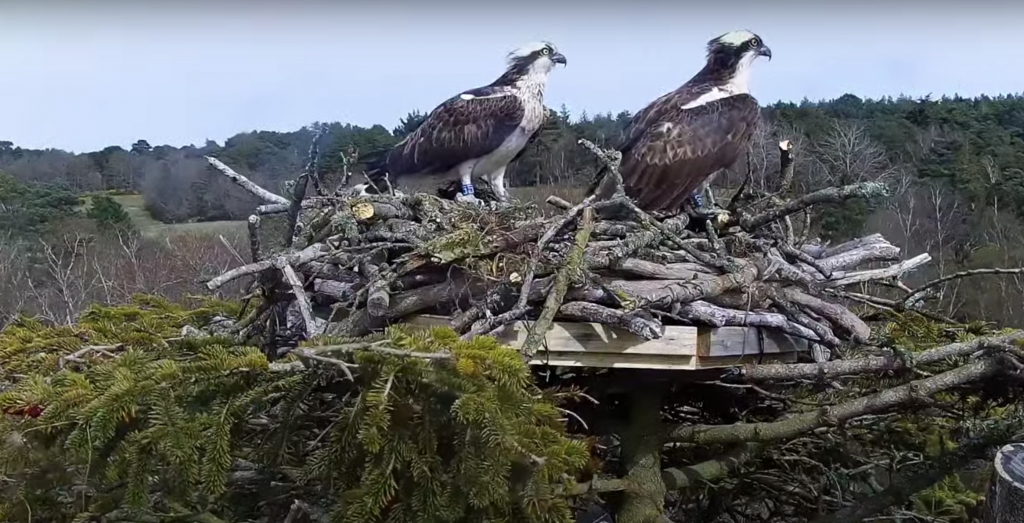
Paul Morton added; “It’s a really fascinating time for nature conservation. There will always be challenges and the death of the male sea eagle won’t be forgotten, but it’s through close, collaborative partnership working, including with Dorset Police, that we can all make things better. For example, in 2016 we discovered there was a mass-illegal collection of gull eggs from Poole Harbour’s Black-headed and Mediterranean Gull colony. As soon as we found out we contacted Dorset Police who played pivotal role in getting the issue stopped with regular harbour patrols and liaising with us. It was so successful that the story made the national news and even featured on BBC’s Countryfile. Dorset Police have also been hugely supportive in regards to any immediate or future nesting attempts of our Ospreys making sure any nests get the best protection they can. It’s these types of partnerships and positive approaches to tackling these issues which will ultimately see success”
Birds of Poole Harbour has said they’re committed to making sure that the pupils exciting experience last year doesn’t end on a negative, and are keen the children understand efforts are being made to look after the remaining eagles that are currently exploring the UK. With other White-tailed Eagles from the reintroduction program now beginning to visit Poole Harbour, more opportunities will be arise to see these awe-inspiring birds of prey in a wild setting.
Tim Mackrill from the Roy Dennis Wildlife Foundation explained;
“When we heard last year that the school children had seen the sea eagle from their boat trip it was really exciting because we know that experiences like that can ignite a real passion for natural history and conservation. The fact that other White-tailed Eagles are now visiting the harbour on a regular basis is an extremely encouraging sign for the future and shows what a superb place Poole Harbour is for these amazing birds. I hope that many more people, of all ages, will be able to enjoy the thrill of seeing them here and in other locations along the South Coast for many years to come”
LIVE: Poole Harbour Osprey Nest Cam

